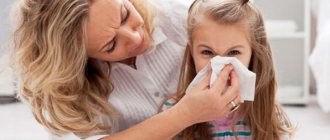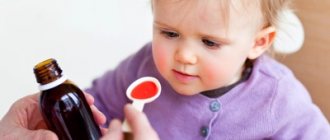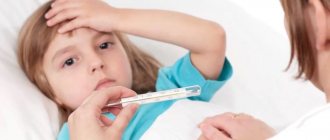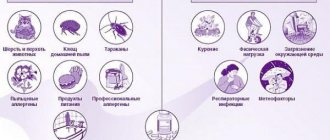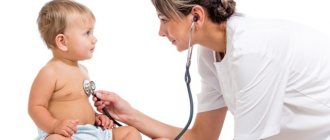How to cure cough and runny nose in a child?
Cough and runny nose in a child can be caused by various diseases; there are different methods of treatment - medication, folk remedies. A runny nose and cough appear due to hypothermia, an inflammatory process in the body - parainfluenza, staphylococci, measles, adenoviruses, pneumococci. It is important to find out the cause in time and begin timely treatment.
Causes of cough and runny nose in a child
Symptoms are typical for bronchitis, tracheitis, sore throat, rhinitis, pharyngitis, nasopharyngitis. If the cough and runny nose are caused by a cold, in addition to these symptoms, high body temperature, aches, and severe cough are also troubling. Children who are constantly sick are recommended to strengthen the immune system with the help of vitamins and also to strengthen the body. To prevent the disease from getting worse, it is necessary to get rid of a runny nose and cough in time.
Methods for treating a runny nose in a child
Babies are advised to remove mucus with a nozzle ejector because they cannot get rid of it themselves. To do this, you must first close one nostril. It is forbidden for children to wash their nose with sprays in large quantities; due to the fact that the child has a short eustachian tube, the liquid can get into the middle ear, all
You can get rid of a runny nose using the following treatment methods:
1. Drop Kalanchoe juice into your nose, no more than 4 drops.
2. Vitaon is an effective remedy for a runny nose; just drop one drop into each nostril.
3. Drip breast milk into the spout; this method must be treated with extreme caution. It has been proven that this remedy can worsen a runny nose, because milk is an ideal environment for the growth of bacteria.
4. An effective remedy is to massage the points, especially pay attention to the wings of the nose.
5. It is recommended to treat a runny nose with sea salt; to do this, you need to dissolve it in water, add soda - a teaspoon, a few drops of iodine, 250 ml of water. After rinsing your nose, you need to give your baby breast milk.
6. The best disinfectant is beet juice; it must be diluted with water. Before using drops for a child, you need to test them on yourself so that they do not burn. Drip three times a day.
7. Before going to bed, you need to apply a napkin to the nose area, first moisten it in eucalyptus oil. The product acts as an inhalation.
8. You can use carrot juice diluted with water. Drip it every 30 minutes.
9. It is recommended to rinse the nose with saline solution; half a pipette is enough. Afterwards, you need to pull out the snot using suction, then lubricate your nose with sea buckthorn oil.
10. Parsley juice effectively treats a runny nose; it must first be finely chopped and squeezed, so you can get the liquid. It is recommended to drip 2 drops into different nostrils.
11. The nose needs to be lubricated with “Star” balm, this must be done from the outside, it is forbidden to use it inside, it can damage the mucous membrane.
12. If the nose is very stuffy, a cottage cheese compress will help, use homemade cottage cheese, it should not spread. It needs to be applied to the bridge of the nose.
13. It is recommended to rinse the nose with herbal infusion. To do this, use “Elekosol”, they need to rinse the nose.
14. One of the best homeopathic remedies is Euphorbium. Small children can drip no more than two drops twice a day.
15. You need to drip 1 drop of Ectericide into your nose.
16. Derinat drops are an effective remedy; this is one of the best antifungal, antiviral and antimicrobial agents that can be used to boost the immune system.
Treatment of cough in a child
1. If you are worried about a deep cough, it is recommended to use a mustard wrap; for the recipe you will need honey - a tablespoon, sunflower oil - a tablespoon, mustard - a tablespoon, flour - a tablespoon. Boil everything, apply to gauze and apply to the chest area, with a warm towel on top.
2. Pour heated sea salt into the sock. Place it under your right armpit, then wrap it with a warm scarf. Leave for up to two hours.
3. Onion juice will help soften the cough; it must be chopped and honey added if the child does not suffer from an allergic reaction. Children need to take one teaspoon three times a day. This can soften your cough.
4. When coughing, it is recommended to drink chamomile tea.
5. The best cough remedy for a child is inhalation with marshmallow root, chamomile, and fennel. Breathe for about 20 minutes.
6. Rubbing helps with coughs; the best remedy is Gedelix, balm by Dr. Theis.
7. The back and chest are rubbed with Vitaon. This way the phlegm will go away faster.
8. The best remedy is massage; with its help you can improve the discharge of sputum in a child.
9. Cough in children can be cured with the help of an infusion, it will require chamomile - a teaspoon, rosehip - 3 teaspoons, St. John's wort, nettle - a teaspoon each, pour a glass of boiling water over everything, leave for about 4 hours.
Cough and runny nose in a child with fever
1. It is recommended to put the baby in the bathtub at a water temperature of 37 degrees. Take for about 20 minutes. This will allow the child to relax and the temperature will begin to drop. It is recommended to add chamomile and calendula.
2. The best medicine is Viburkol.
3. When there is a temperature, you should not wrap your child up.
Cough with runny nose and red throat
1. Dilute propolis in a glass of water and give it to the child to drink. You can rub it on your child's throat.
2. For severe sore throat, hot milk with added butter helps.
3. Drink as much warm water as possible.
4. If the child does not suffer from allergic reactions, it is recommended to give him warm honey; it cannot be swallowed immediately, it must be kept in the mouth for some time.
5. Dry cough due to laryngitis and loss of voice can be cured with the help of Homeovox, Angin-Hella. Please note that the doctor often prescribes treatment with Inhalipt, this is a very harmful drug, it can irritate the mucous membrane of the throat even more.
So, a runny nose and cough can accompany various diseases; it is important to relieve the symptoms in time and alleviate the child’s condition.
medportal.su>
How to treat a cough from snot in a child
How to treat a cough from snot in a child? This is the question parents ask when their baby has no fever or feels unwell, but has a cough. As a rule, children begin to cough after a runny nose develops, especially if the mucus produced is liquid. What is the reason for this, is it necessary to treat the disease with cough medicine?

Where does the problem come from?
Coughing is a reflex reaction of the body to irritants that enter the respiratory tract. The anatomical shape of the nasopharynx has such a structure that sometimes when you have a runny nose, mucus flows down its wall, gets on the ligaments, irritates them, resulting in a cough from snot. Even if a child blows his nose, sputum still gets into the respiratory tract. It is the mucus from a runny nose that irritates the throat.
Therefore, you need to fight not with the consequence, but with its cause - a runny nose. It is known that the body protects itself by coughing, so if the nose treatment is correctly prescribed, the problem will be eliminated as such. If you do not pay attention to such a “trifle,” a runny nose can develop into quite serious complications: the appearance of sinusitis, rhinitis, cysts. Likewise, improper treatment of cough can turn into chronic forms. It is necessary to show the child to the pediatrician and ENT specialist. The pediatrician will listen to the lungs for wheezing, and the ENT specialist will examine the condition of the nose.
When it turns out that a cough from snot appears due to damage to the upper respiratory tract, this may indicate developing laryngitis or tracheitis.
Symptoms of laryngitis: dry mouth, burning throat, periodic bouts of dry cough, swelling, sore throat. Laryngitis is treated with inhalations.
Tracheitis is characterized by inflammation of the larynx. Symptoms: a strong cough without clearing the throat in a child appears in the morning. So, it is absolutely impossible to suppress the disease with cough medicine, because the deterioration of the condition is not caused by the virus, but by the appearance of a runny nose.
What should I do?
Discharge from the nose appears as a result of changes in the functioning of its internal membranes. The reasons can be very diverse: allergies, foreign objects, acute respiratory viral infections, other diseases, and so on. The nature of snot is divided into two types: thick and liquid. Most often, a cough occurs with liquid secretions, which more easily fall on the back wall of the nasopharynx.
To treat this problem in children, it is better to primarily use drops.
They are gentler than sprays. Only a doctor can prescribe an effective drug against the common cold. There are many remedies of varying degrees of action for the appropriate age. It is not worth buying drops or prescribing the dosage yourself because parents do not know what caused the runny nose. Plus, the treatment must be comprehensive, since there is a runny nose and cough. First you need to eliminate the snot, and then soothe your irritated throat.
However, despite this, parents can take a number of measures that will ease the course of the disease in the baby. Treating with home remedies should also be done with caution. First of all, you need to promptly remove mucus from the nose, as well as the mucus that the child coughs up, and make sure that it is not swallowed.
This should be done with a soft napkin or handkerchief so as not to create irritation around the nose. In addition, it is necessary to teach children to blow their nose, since snot interferes with full breathing. Avoid overheating or hypothermia of the baby. Feet should always be kept warm.
The children's room must be kept clean, and the room temperature should not exceed 20 degrees. Airing before bed is useful. Air humidification with special devices is allowed.
Walking in the fresh air is not prohibited if the baby does not have a fever and the weather outside is warm enough.
Aromatherapy will help relieve a runny nose. Just add a couple of drops of eucalyptus or mint oil to your bath. Healing steams can actively fight germs in the nose.
It is allowed to rinse the nose with sterile sea water, especially with very heavy mucus secretions.
Drinking plenty of fluid also has a positive effect. Linden tea and drinking warm milk with honey at night will help eliminate colds and runny nose. It is worth remembering that honey cannot be dissolved in hot liquid, as it loses its healing properties.
During a cold, a child should consume sufficient amounts of vitamins. This will strengthen the body's natural defenses.
Massaging the wings of the nose helps remove snot. In addition, you can massage the bridge of your nose from top to bottom. Do it at least three times a day.
Conclusion on the topic
Cough and snot are interconnected. When a child feels fine, but suffers from a cough and runny nose, then the reason lies in the mucus that has entered the respiratory tract.
Parents should never try to treat symptoms on their own, thinking that the problem will go away on its own. If medical assistance was prescribed on time, it will relieve the baby from painful discomfort, so do not neglect a visit to a specialist.
lor03.ru>
Remedies for runny nose
Medicines for the common cold should also be used correctly. Drugs are divided into several groups, each of which solves a specific problem or has a complex effect at once.
As a rule, a runny nose caused by an allergic reaction quickly disappears after oral administration of the above antihistamines. For a complete list of medications and treatments for allergic rhinitis, read this article.
To speed up the effect, you can use drops based on xylometazoline. This active substance has a vasoconstrictor effect and quickly stops the flow of mucus from the nose and removes swelling.
Attention should be paid to the concentration of nasal drops. 0.05% is used in children from 2 years of age, and 1% is suitable for use in children after 6 years of age.
The list of drugs includes:
- Rinorm;
- Galazolin;
- ForNose;
- Rhinotaiss;
- Xylene;
- Rhinostop;
- Snoop and others.
A complete list of vasoconstrictor drugs and their classification by age can be found in this article.
When snot flows from the nose due to a viral or bacterial infection, the following groups of nasal drops are prescribed:
- local antibiotics (Isofra) and antiseptics (Furacilin);
- preparations based on sea salt for rinsing and moisturizing the nasal passages (Aquamaris, Quix, Aqualor);
- children's vasoconstrictors, to eliminate swelling of the mucous membranes and facilitate nasal breathing.
- antiviral and immunomodulating drugs (Gripferon, Tamiflu, IRS-19).
The medications are selected depending on the severity of the symptoms, as well as other medical prescriptions and the baby’s medical history. Independent selection and use of medications should be excluded, since there is a high chance of making a mistake. Read this article on how to properly treat a child’s runny nose.
Despite the prevalence of symptoms such as cough and runny nose, such manifestations should not be treated negligently. In the case of children, it is necessary to carry out diagnostics at a face-to-face appointment with an otolaryngologist. Timely prescribed therapy will help cure diseases in a short time, and will also prevent most serious complications in a fragile body.
Doctor Komarovsky, Is there ARVI without fever?
Source
All materials on the site are published under the authorship or editorship of medical professionals, but are not a prescription for treatment. Contact the specialists!
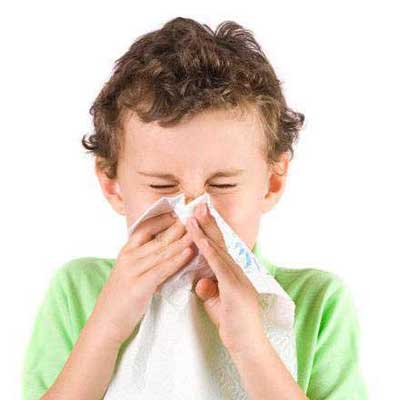
Cough and sniffles without fever in a child are not uncommon. Parents begin to sound the alarm, offering their child antiviral or antibiotics. But before you go to the pharmacy for a package of medications, you should accurately establish the diagnosis.
How to treat cough and runny nose, throat
The first signs of an incipient cold or respiratory illness are a runny nose and cough. Basically, they begin to appear in the cold season, however, you can often meet a person with such symptoms in the summer or in the off-season. Before treating a cough and runny nose, you must visit a doctor. He will make a final diagnosis and prescribe a set of various methods and techniques necessary for recovery.
Treatment of runny nose and cough: causes of symptoms
Signs of a cold, expressed in the form of sharp, spasmodic exhalations and nasal discharge, are the body’s protective reaction to the invading virus:
- The inner lining of the nasal cavity, trying to cleanse itself of pathogenic microorganisms and create a barrier to their further entry into the respiratory system, begins to produce mucus more intensely than in the normal state.
- A cough occurs when an accumulating substance enters the bronchi from the nose or due to an inflammatory process that begins in the lower parts of the respiratory system.
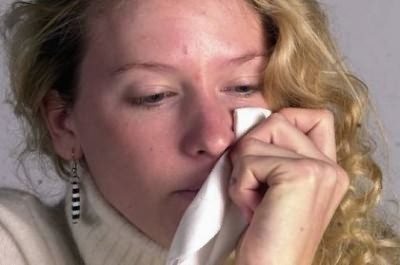
At a certain stage they prevent the development of the disease. Sometimes the body copes with colds and respiratory ailments on its own, and symptoms such as cough, fever, runny nose do not require treatment, but disappear on their own without developing much. However, if unpleasant phenomena only become more intense and your health worsens, then it is imperative to take appropriate measures. They, of course, do not consist in the independent selection of drugs and methods that relieve only the unpleasant symptoms of diseases, but in the competent fight against the main illness and the reduction, with the help of additional means, of its unpleasant manifestations.
How to cure a runny nose and cough: a variety of techniques and methods
You can combat sudden, spastic exhalations accompanied by nasal discharge, fever, and sore throat using different methods:
- Medication.
- Folk remedies.
- Warming and massage treatments.
- With the help of homeopathic medicines and unconventional techniques.
Each method has its own advantages and contraindications, so the doctor chooses a set of means with which to treat the patient, taking into account the nature of the underlying disease, the individual characteristics of the body, age, and the severity of the symptoms that appear.
The drug method is quite effective and widely used in the treatment of a runny nose, dry cough and its variant with sputum discharge. It implies the possibility of drugs entering the body in several ways:
- Orally (in the form of tablets, syrups, tinctures, mixtures, etc.).
- Inhalation (by inhaling vapors and suspensions, both hot and cold).
- Injection (intravenous and intramuscular injections are performed).
- Locally (sprays, drops, solutions for gargling and lubricating the throat are used).
Medicines help treat the underlying disease and reduce the intensity of cough and runny nose. However, you should know that each pharmaceutical product has its own disadvantages and do not expect an immediate recovery:
- Tablets, syrups and mixtures first enter the gastrointestinal tract and then spread into the blood. Some categories of patients (pregnant women, small children) may be prohibited from treating diseases with the help of such means.
- Inhalations require a nebulizer or a saucepan, which is not always possible (the sick person may, for example, be away).
- Drops and sprays have a short-term effect, and in case of severe swelling they may not be treated effectively.
- Injections frighten some patients because they are painful. In addition, a runny nose and cough are not too severe and life-threatening diseases to be treated this way and to use this method as the main one.
It should be remembered that there is no unique pharmaceutical drug for the unpleasant phenomena accompanying colds and respiratory diseases. The doctor selects the necessary medications on an individual basis, so you cannot prescribe medications on your own.
Folk remedies include a fairly wide selection of different techniques that allow you to symptomatically treat cough, runny nose, as well as other phenomena accompanying them. It can be:

Decoctions.- Tinctures.
- Compresses.
- Compositions for rubbing.
- Rinse products.
- Solutions for nasal instillation.
Folk remedies are selected depending on the predominance of a particular symptom accompanying the underlying disease. They are rarely used as an independent means of combating unpleasant phenomena and are used in combination with other methods.
Warming procedures and massage are also very often prescribed by doctors for the treatment of cough, snot, fever, and sore throat. Widely used:
- Banks.
- Mustard plasters.
- Warming your feet in hot water.
- Applying compresses to the neck and chest.
Warming techniques are good for the removal of mucus from the body and contribute to the degeneration of a dry cough into a wet one. However, it is worth remembering that these procedures are not allowed to be carried out if the patient has an elevated body temperature.
Doctors often recommend treating the effects of colds and respiratory diseases with massage. He can be:
- Canned.
- Drainage.
- Medov.
Massage perfectly stimulates the healing process. In addition to fighting cough and runny nose, it significantly increases immunity and improves the general health of a sick person.
Among all the methods and techniques, the doctor selects those necessary for a particular patient and prescribes a scheme for combating the main ailment and its manifestations, which the patient must strictly adhere to.
How to treat a throat, runny nose and cough?
There are many different methods, tips and recipes to help get rid of unpleasant symptoms, expressed in spasms of the respiratory tract, constant leakage of fluid from the nasal cavity or, conversely, its stagnation.
The main thing is to choose them correctly. For example, before treating a cough from snot, you need to be sure that sharp reflex exhalations are caused precisely by the irritating effect of mucus on the receptors. And with the help of drainage massage, you should try to remove the symptom not at the height of the disease (since this is useless), but during the period of its attenuation.
Various techniques can be used as effective means for treating dry cough, runny nose, productive spasmodic exhalations, and snot. For example, to relieve swelling of the mucous membrane and disinfect the nasal cavities, it is recommended to treat a person in this way:
- Place a few drops of Kalanchoe into each nostril, and then rest thoroughly.
- Massage the wings of your nose with your fingertips more often.
- Instill a solution of sea salt and diluted beet juice.
- Moisten a napkin with eucalyptus oil and place it in the room where the patient is.
- Place a warm compress of cottage cheese on the bridge of your nose.
- Instill various oils into the nostrils: peach, olive, menthol, sea buckthorn.
- Rinse the nasopharynx with solutions of herbs and soda.
- Apply homeopathic medicine euphorbium to the nostrils.
- Do inhalations using various medications, inhaling steam through the nose and exhaling through the mouth.
- Drip naphthyzin, galazolin, sanorin.
- Lubricate your nostrils with honey.
If a cold is accompanied by green snot and cough, treatment is aimed at eliminating soreness, softening the throat, and relieving inflammation in the throat and nose. It can be done this way:
- Place warm compresses made from vodka, cottage cheese, honey, and medications on the neck.
- Rinse the nasopharynx with a solution of sea salt, which is sucked in through the nostrils and then spat out.
- Drink hot beer at night.
- Gargle three times a day with a mixture of honey and apple cider vinegar in a ratio of 2:3.
- Chew lemon more often.
- Make inhalations from boiled potatoes, medicinal, herbal solutions. Perform the procedure by inhaling steam through the nose and exhaling through the mouth.
If the disease has descended into the bronchi, and the cough, in addition to a runny nose, is accompanied by strong sputum production, then it is recommended to treat the patient using the following means:
- Rub with internal animal fat.
- Apply warm compresses to the chest, as well as apply cupping and mustard plasters.
- There is a paste of ground pine cones and honey.
- Perform a honey massage.

However, they must be combined with each other. That is why it is so important not to engage in self-treatment, but to consult a specialist in a timely manner. Only under his clear guidance is it possible to cure a cough and runny nose most effectively and quickly return to a healthy state. pro-kashel.ru>
Drug treatment regimen
Therapy with medications is prescribed depending on the cause of the runny nose and cough. Treatment for allergies is significantly different from treatment for a viral or bacterial disease.
If the symptoms are of allergic origin, the following are prescribed:
- Antihistamines. Zyrtec, Tavegil, Claritin, Zodak, Suprastin and others are highly effective.
- Glucocorticosteroids. Indicated in cases where there is expiratory shortness of breath and signs of bronchial asthma. The most commonly prescribed medications are those based on salbutamol and budesonide.
- Symptomatic medications to help relieve cough and runny nose.
A child has a runny nose and cough without fever: what does this mean?
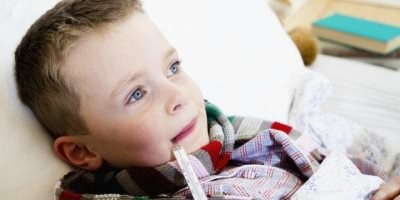
Colds occur very often in children, and this is especially true for infants. A runny nose without fever occurs due to the fact that the respiratory tract is cleared of various types of contaminants. This phenomenon is considered normal and does not require cause for concern. But sometimes a runny nose and cough without fever can be a reason to see a doctor. There are many reasons for the occurrence of such symptoms, so the doctor’s task is to find the one and eliminate it.
You can find out what to do when a dry cough does not clear your throat by reading this article.
Causes
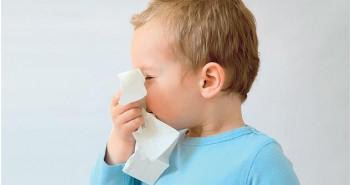
As a rule, a runny nose and cough without fever are symptoms of a cold, which are caused by various viruses.
The baby’s immune system begins to recognize pathogenic microorganisms and begins to fight them. But sometimes it can be very difficult to recognize a virus, so it easily penetrates the body’s cells. For this reason, with a bacterial infection, the temperature rises almost immediately, but with a viral infection, the indicators remain normal.
Why a dry cough occurs without signs of a cold is indicated in the article.
If viral rhinitis is left untreated, the cause of such neglect of health can be severe inflammation of the sinuses. In other words, the child will develop sinusitis. It is also important to understand that along with mucus, microbes can enter the throat and trachea. If you do not provide your baby with timely treatment, he may develop the following complications:
- Pharyngitis, laryngitis;
- nasopharyngitis;
- Angina;
- Bronchitis, tracheitis and pneumonia.
How to treat tracheid cough can be found in the article.
In the video, the child has a runny nose and cough without fever, the reason is possibly a red throat:
You can learn how to treat bronchitis by reading this article.
A viral infection greatly weakens the body’s protective functions, as a result of which a bacterial infection can also join in. ARVI very often activates other pathogenic microorganisms, which lead to inflammation of the ENT organs. Based on this, parents must understand that they cannot do without the help of a doctor, even if the cough and runny nose are not accompanied by an increase in temperature.
The next reason for the development of such symptoms is an allergic reaction. Allergic rhinitis occurs in patients who spend a long time in a dusty room. Very often this occurs due to infrequent wet cleaning. A runny nose can be a reaction to flowering plants, flying insects, children's cosmetics and chemicals. Often, even healthy children are affected by a cough and runny nose due to the very dry air in the room.
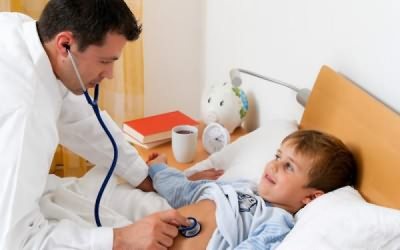
If a dry cough and runny nose without fever bother the baby for a long time, then these are very alarming symptoms. Against the background of an allergic reaction, young patients may develop bronchial asthma. In this situation, it is very important to provide timely help to the baby, this is the only way you will double the chances that your child will grow up healthy.
How to treat dry paroxysmal cough in an adult is indicated in the article.
Therapeutic measures
To overcome a viral infection in a child’s body, it is necessary to have antiviral medications. Without them, treatment will not have a positive effect. But before this, a mandatory consultation with a specialist is necessary; only he will be able to determine which of the available drugs will be the most effective and what is its dosage. The group of antiviral drugs includes the following:
- Remantadine;
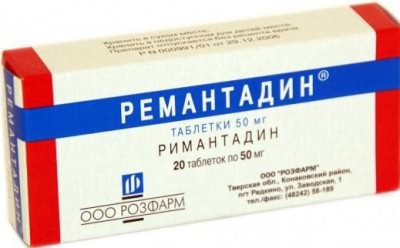
- Ingaverin;
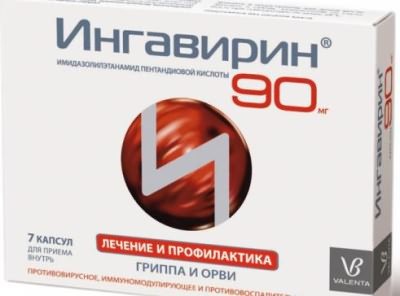
- Arbidol;
- Ribavirin;
- Isoprinosine.
These are not all drugs; these are allowed to be used by children from the first day of life. To increase the fight against the disease, it is worth using interferonogenesis inducers in treatment:
- Cycloferon;
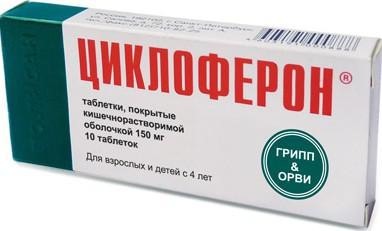
- Laferon;
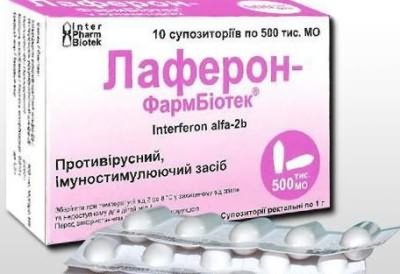
- Anaferon;
- Viferon.
You can learn how to treat a wet cough and runny nose without fever by reading this article.
To increase vitality and the body's defenses, it is worth taking echinacea tincture. At the time of therapy for young patients, it is very difficult to do without medications, the action of which is aimed at combating symptoms. When a child has a stuffy nose and finds it difficult to breathe, vasoconstrictor nasal drops can be used:
- Galazolin;
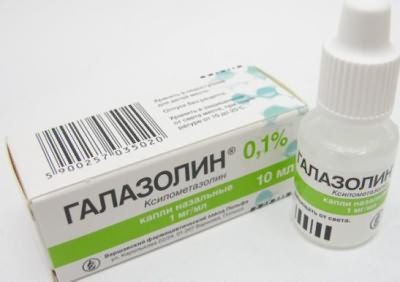
- Tizin;
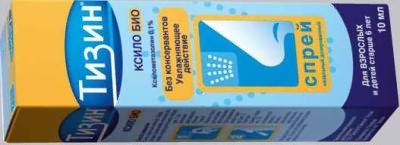
- Nazivin;
- Farmazolin.
But you shouldn’t get carried away with them either. It is allowed to use drops for no more than 5 days, otherwise you may develop allergic rhinitis.
What to do when a baby has a runny nose without fever can be found in this article.
When a child is tormented by a wet cough, it is necessary to prescribe medications whose action is aimed at thinning the mucus and its rapid clearance. For these purposes, it is necessary to use tincture of licorice root, marshmallow, Mucaltin, ACC.
To eliminate dry cough, you can use Tusuprex, Pertussin, Libexin. Prolonged cough is perfectly eliminated by herbal chest mixture. But you shouldn’t suppress your cough once again, since you can interfere with the discharge of sputum, and inflammation will occur in the lungs.
To relieve swelling and allergies that arise due to the inflammatory process, it is necessary to use antihistamines. The following types of drugs are in great demand here:
- Tavegil;
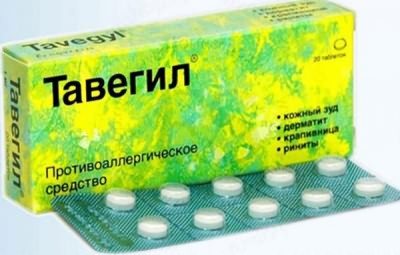
- Suprastin;
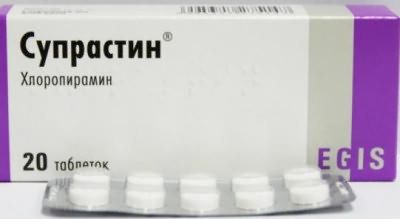
- Loratadine;
- Zaditen.
When treating a cold at home, you can use inhalations. Thanks to them, it is possible to direct medications directly into the respiratory tract. For such treatment, it is allowed to use both special inhalers and improvised means. All components of the medications penetrate along with steam into the upper respiratory tract and cleanse the mucous membrane of microbes, relieve pain in the throat, cough and hoarseness in the voice.
Whether there can be a cough during teething will become clear after reading this article.
You can use time-tested steam inhalations. This is inhaling steam from boiled potatoes. It is necessary to thoroughly wash the vegetable and boil it, drain the water and bend over the hot potatoes, covering the top with a towel. Dispense a couple within 20 minutes. If you perform similar manipulations with a 3-5 year old child, then they must be performed together, otherwise the child may get burns.
When a cold is expressed by a runny nose, you should use homemade nasal drops. For these purposes, you can use Kalanchoe, aloe, garlic and onions.
If you decide to use aloe juice, it is best that its age does not exceed 3-4 years. Dilute the resulting juice with water in a ratio of 1:10 and drip the medicine into each nasal passage, 3-5 drops. You should not combine aloe juice with drugs such as Naphthyzin or Sanorin. Otherwise, this will lead to the development of sinusitis.
How to treat a wheezing cough is indicated in the article.
Features of treatment of infants
If a baby has been diagnosed with a cold, which is characterized by coughing, runny nose and sneezing without fever, then you should immediately go to the clinic. After a thorough diagnosis, the doctor will be able to determine the cause of the pathology and prescribe appropriate treatment.
The video talks about the causes of a runny nose without fever in a baby:
First of all, all actions should be aimed at increasing the body's immune forces. To do this, the baby needs to be given Interferon and Grippferon. Place a drop in the child's nose into each nasal passage 2 times throughout the day. If the baby is already 6 months old, then you can give him children's Anaferon for the treatment of influenza and the prevention of colds. A tablet of this drug should be dissolved in warm water and then given to the baby to drink. The number of doses per day should not exceed 3 times.
How to cure asthmatic cough is indicated in the description of this article.
The sooner parents start treating a cold, the faster it will begin to have a positive effect. The presented drugs will prevent damage to the baby’s body during a flu epidemic, when another adult has already become ill with it.
Treatment of rhinitis during a cold involves the use of Aquamaris or Solin.
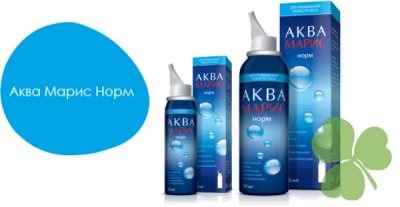
These are saline solutions that need to be dripped into the little patient’s nose. If you have severe nasal congestion, you can purchase aloe extract at the pharmacy. For colds, inhalation using garlic has a positive effect. It is necessary to grind this product on a grater and let the baby breathe. It is not permissible to use vasoconstrictor medications for an infant.
To treat a cough, you can give your baby a dessert spoon of chamomile infusion 3 times a day. It can only be taken by a child who is over 6 months old. To irrigate the throat, you should use Tantum Verde spray, do the procedure 2 times a day.
Mother's milk has a disinfecting effect, so a baby with a cold needs to breastfeed as often as possible. In addition, it is worth providing your child with plenty of fluids.
If your baby coughs, you can make a vodka compress. To do this, mix vodka and water in equal proportions, moisten cotton wool in it and place it on the throat, cover with gauze and cellophane on top. Such activities must be carried out with extreme caution, otherwise you can burn the baby’s delicate skin. It is also allowed to use mustard plasters, but here you need to be extremely careful, place them only through 3 layers of gauze and after the doctor has approved such treatment.
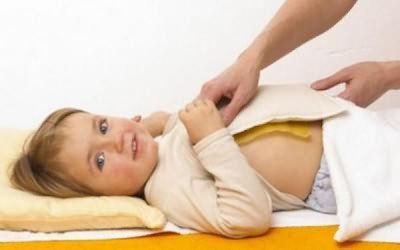
If a child has a cold accompanied by a severe cough, then he is allowed to use Mucaltin among medications. This medication has no side effects, as it is made from natural ingredients.
What does Komarovsky think?
According to the famous pediatrician Komarovsky, during the treatment of cough and runny nose without fever, parents should direct all their efforts to keeping the mucous membranes of the nose moist. Here it is necessary to regularly fill the child’s room with fresh air, so that the room temperature does not exceed 21 degrees, and the air humidity is not lower than 75%.
The doctor gives parents the following advice:
- Regularly irrigate the nasal mucosa with saline. You can buy it at any pharmacy, or you can make it yourself. You just need to dissolve a dessert spoon of sea salt in a glass of warm water.
- Use the drug Ectericide, which has an anti-inflammatory and softening effect.
- Perform inhalations using a nebulizer or improvised means. Medicinal herbs and essential oils are excellent for these purposes.
In the video, Dr. Komarovsky talks about coughing without runny nose and fever:
To avoid colds for your child, Komarovsky recommends following the following rules of prevention:
- Strengthen the body, so often walk with your baby outside and play active games.
- The baby's diet should be filled with vitamins and microelements.
A runny nose and cough are two unpleasant symptoms that indicate that a virus has settled in the body. A viral disease can occur without fever, which indicates the child’s strong immunity. But even in this case, treatment is a necessary measure. It is important to maintain the baby’s immune strength, otherwise the body will not cope and various complications will arise.
ProLor.ru>
